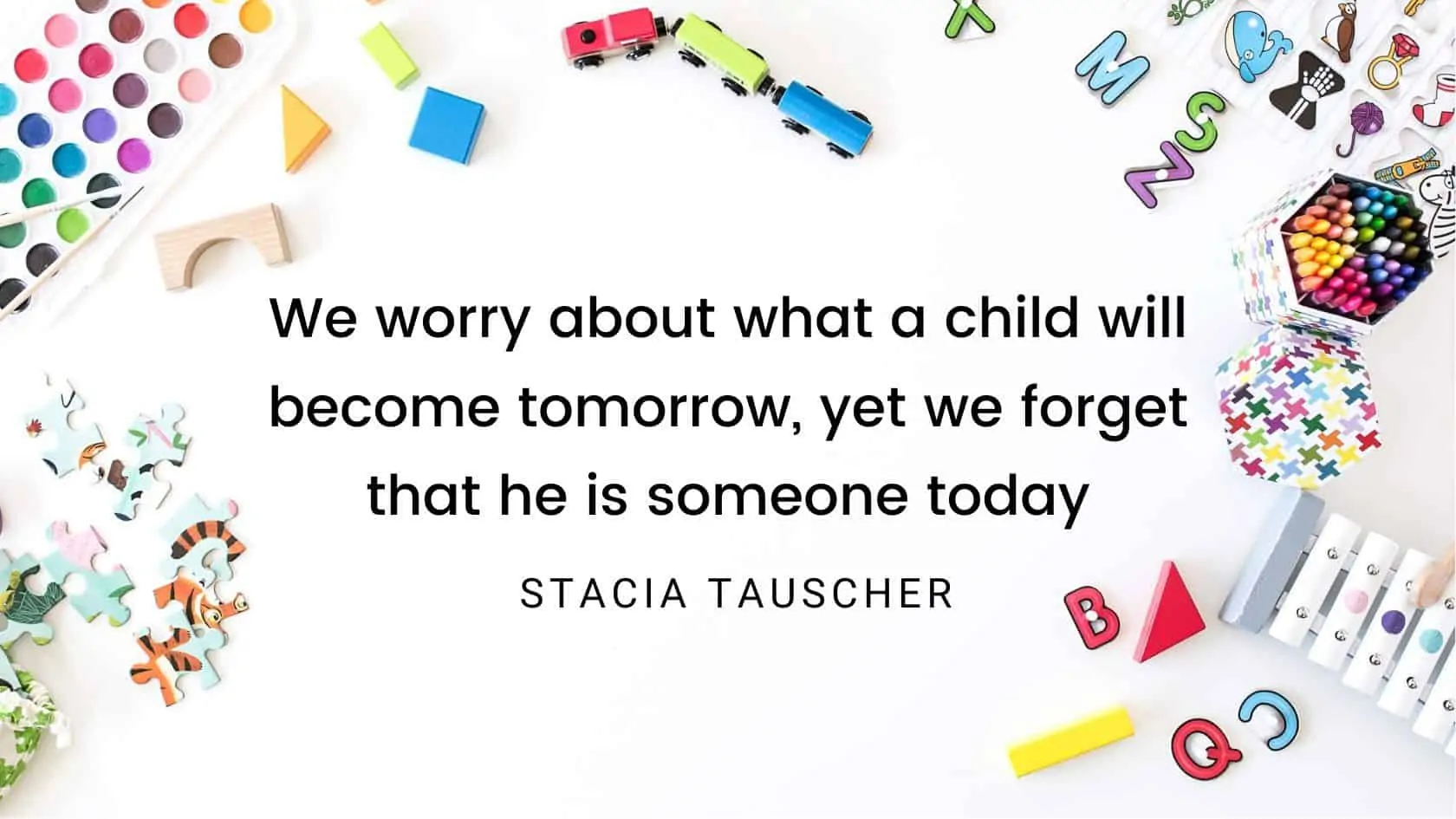8 Steps To Help Your Child With Self-Esteem
Steps to Positive Self Esteem: How Can I Help My Child Develop Positive Self-Esteem?
Self-esteem comes from within. It isn’t something we can give our children, but we can foster it by teaching them the skills they need to gain confidence. Part of that process entails allowing them the freedom to make choices – and to fail.
Learning from failure is part of the process. For those who have illusions of control over their kids, this can be difficult. Control is often disguised as protection or safety, which is part of parenting, but within limits.
Related: darlingsteps.com/everything-you-didnt-know-raise-happy-confident-kids
Step 1: Communicate Expectations with Accountability Clearly
Expectations lead to accountability. Be clear about your expectations. Ensure you both agree on the expectations. If needed, spell it out step-by-step. This is part of teaching kids what you want them to do, rather than just punishing them for doing it wrong, or different, from your wishes.
“Each day, I want you to bring your books home, along with the assignments for each class. After you finish your snack, do your homework. When I get home at 6:00, I will review your assignments for the next day. If they are not complete, you will not have any phone, tv, or computer time until everything is complete. Any questions?”
“For every day that your assigned chores are completed before bed, you will earn $2. If the chores are not completed, you receive no allowance for that day.”
If needed, outline specifically what needs to be done for a chore to be considered complete, such as, “Make your bed, pick up everything lying around, and put clothes away or in the hamper.”
Step 2. Get All the Adults on the Same Page
Clear rules and expectations should be agreed upon by all adults, including grandparents and sitters.
Help others understand that inconsistency leads to many problems, not the least of which is teaching your kids how to manipulate people and decrease the possibility of producing responsible, confident adults.
If there are disagreements, work it out without your child suffering the consequences of adults letting them down.
Step 3. Be Consistent. Follow Through and Negotiate any Changes Explicitly
Your kids must take responsibility for their choices – and you do, too. If you make it clear that homework will be checked when you get home from work, check the homework. Do it every day. Hold up your end of the deal. Show them that school is a priority.
If you’re inconsistent in following the guidelines you put in place, you’re sending a message that this issue is not important – and that you can’t be trusted to follow through with your responsibilities. You’re inadvertently teaching your child that you aren’t trustworthy.
The result is mixed messages and a child who may take advantage of this by slacking off on their end of the deal.
If there’s a ballgame or another extracurricular activity after school and homework needs to be done at a different time, make that explicit. Make clear plans in advance whenever possible. “Do your homework after dinner tomorrow since you’ll be late getting home.”
Related: darlingsteps.com/what-are-you-teaching-your-child-by-being-inconsistent
Step 4. Allow Them to Experience the Natural Consequences That Arise From Their Choices
You must be willing to let them fail. This is where most people stop nodding in agreement.
This requires that your self-esteem can withstand any judgment from teachers, family, friends, and others. And, that you understand that you have a limited amount of control over another human, even your child.
You also must be willing to tolerate the conflict it may cause in your home and family.
With any luck, you may only have to allow this to go to the extreme a few times before they get the message. For example, your child will begin to realize that it is their responsibility to do what is required for school, and that you won’t protect them from the consequences of their actions and choices.
“It’s time for bed. I see that your homework still isn’t complete. You’ll have to go to school tomorrow and tell the teachers that you didn’t complete your homework.”
“If you receive detention, you’ll need to serve it. If you get a failing grade, you’ll need to work harder the rest of the year to recover. The coach will drop you from the roster for the year. If you don’t get credit for the class, you may have to repeat it in summer school – and earn the money to pay for it.”
Stand firm – get all adults in agreement.
Step 5. Help Them Learn From Their Failures and Shortcomings
Failing is most helpful when we learn something from it. We all must learn to live with our decisions and actions, or inaction. If and when they’re willing, ask your children to tell you what they learned from the experience.
However, avoid asking this when the tension is high. After the incident, find a teachable moment in which to discuss it. Talk about how they can handle this situation differently in the future.
They may make the wrong choice again and again. If so, at some point, they will finally realize that when they make that choice, they’re also choosing the consequences that go with it.
We all make choices that are not the best option – even though we know the consequences. That happens. Learn to let go and always love them while sticking to your standards, even when you’re disappointed, and they’re miserable.
“Are you ready to talk about what went wrong and what you can do differently next time?” If not, let it go and say, “Let me know when you’re ready to talk about it.”
Related: darlingsteps.com/ultimateguidetogrowthmindsetformomskids
Step 6. Encourage Good Behavior and Avoid Reinforcing Bad Behavior
“Catch them being good” is a phrase that can’t be overstated. When your kids do things that you want to see more of, thank them. Tell them you appreciate them and use your words to describe what you like. “I appreciate it when your chores are done early, and we can relax after dinner.”
Reinforce their efforts even when they miss the mark. “I know you tried your best on the math test. Maybe your teacher can offer some guidance on what you missed.”
Be careful that you don’t inadvertently lower the expectations.
For example, the expectation is that chores are done before bed, so avoid going overboard with praise for doing what is expected. Acknowledge it with a simple “Thanks for cleaning your room today.” Hopefully, you’re already reinforcing this behavior, such as with a weekly allowance.
Completing the chores early and without any stress is something you want to praise and reinforce – going beyond the minimum.
Related: daringsteps.com/10-skills-every-kids-needs-to-know
Step 7. Set up Opportunities for Your Child to Succeed
Allow children to make choices from an early age, within reason. “You need to put on a coat before leaving for school. Do you want to wear the red or green one?” This doesn’t give them the option to go without a coat. It’s a safe way to teach decision-making.
As they get older, the choices become riskier, but that is part of the developmental cycle. Those who begin making decisions at an early age will develop more confidence, and therefore, are more likely to take calculated risks.
Giving them more choices within reason builds more confidence.
If they mess up a lot, say coming home at 10 instead of 8:30, you can easily say “I may have overestimated how much freedom you can handle right now. Weekend curfew will be 7:00 now, and we’ll revisit this when you demonstrate the ability to adhere to that curfew for a while.”
Related: darlingsteps.com/boostkidsconfidence
Step 8. Love Them Anyway
Learn to detach from the outcome. Do what you can to uphold your responsibility to your children and accept that you can’t control the outcome.
Always separate the behavior from the child.
I don’t like what you did, but I love you
The Self-Esteem Ladder
- Expectations lead to accountability.
- Accountability leads to responsibility.
- Responsibility leads to choices.
- Choices lead to consequences.
- Consequences lead to critical thinking.
- Critical thinking leads to taking more calculated risks.
- Taking risks leads to success and failure.
- Success and failure lead to learning.
- Learning leads to growth.
- Growth leads to confidence.
- Confidence leads to expectations.
Related: darlingsteps.com/everything-you-didnt-know-raise-happy-confident-kids
What’s Next:
Consider these self-reflection questions in your endeavor to promote positive self-esteem in your children:
- How often do you provide opportunities for your child to learn by allowing them to make decisions on their own?
- How well do you uphold your responsibilities by being clear about expectations and consequences, following through, and working together with other adults?
- How do you talk about mistakes and failures to help your children learn?
- Do you always separate the misdeed from the child?
- In what ways do you show that you appreciate their efforts when they do their best?
- How do you reinforce good behavior and choices?
- Do you allow your kids to experience negative consequences for choices and behavior? In what situations is this more difficult for you?
Related: darlingsteps.com/ultimateguidetogrowthmindsetformomskids
Be honest with yourself. If you wish to experience improvement in any area, set some goals and get help with parenting, if needed. Your children deserve it!





